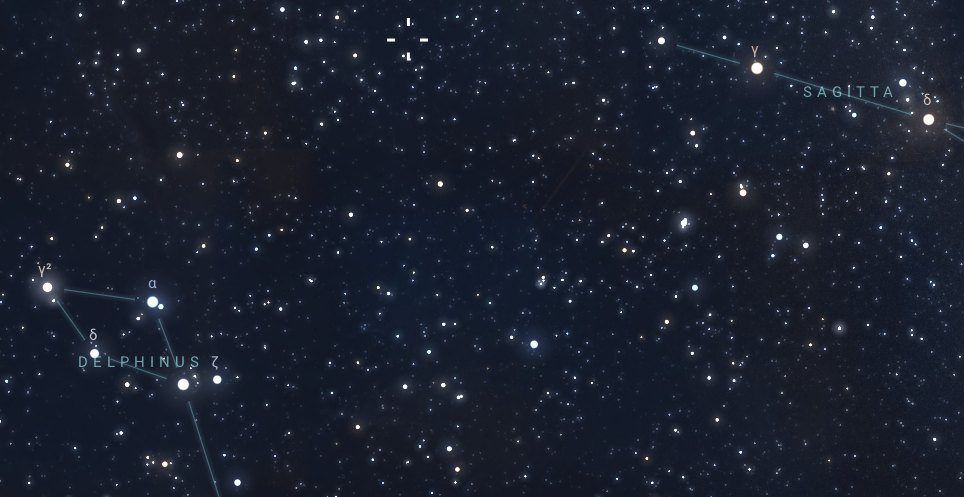NGC 6905, also known as the Blue Flash Nebula, is a planetary nebula located in the northern constellation Delphinus, approximately 7,500 light-years from Earth. The nebula was discovered by the British astronomer William Herschel on September 24, 1784. Here’s a closer look at this celestial object:
Appearance and Composition
NGC 6905 is known for its striking blue coloration, primarily caused by ionized oxygen and other elements in the nebula’s gas. This unique hue is particularly captivating for astronomers and stargazers alike, as it highlights the intricate processes occurring within the nebula. The blue coloration results from the emission of light at specific wavelengths, predominantly in the blue-green spectrum, which is a characteristic feature of planetary nebulae that have undergone significant ionization.
Like other planetary nebulae, the Blue Flash Nebula is primarily composed of gas, including hydrogen, helium, and traces of heavier elements. The striking colours observed in the nebula arise from the ionization and emission of gases, such as oxygen, ejected by the central star. This star is a white dwarf, the hot, dense core left behind after the star has shed its outer layers during its late evolutionary stages. Over time, as the white dwarf emits ultraviolet radiation, it ionizes the surrounding gas, causing the nebula to glow.
The nebula is part of a dynamic cycle in stellar evolution, where the outer layers of the star are expelled into space, enriching the interstellar medium with elements that can later form new stars and planets. NGC 6905’s relatively compact size, coupled with its brightness and unique color, makes it an intriguing target for amateur and professional astronomers alike, as they explore the complex interactions that occur in these fascinating celestial objects. Observing NGC 6905 not only provides insight into the life cycle of stars but also highlights the beauty and complexity of the universe.
Observation
The apparent magnitude of NGC 6905 is approximately 12.1, making it relatively faint and requiring a telescope with moderate to high magnification for effective observation. When viewed through moderate telescopes, it appears as a small, faint, round, or slightly elongated nebula.
Large-aperture telescopes with moderate to high magnification are best suited for observing this faint planetary nebula, allowing observers to appreciate its intricate structure and striking blue coloration. These telescopes provide greater light-gathering power and magnification, enabling observers to discern the faint details and colours of the nebula more effectively.
NGC 6905 can be observed from the northern hemisphere throughout the year, but the best months for observation are typically from June to October (summer to autumn), when Delphinus is higher in the sky.




